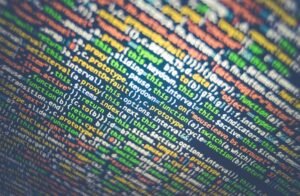How Deep Learning Models Are Built on Keras
Deep learning models have revolutionized the field of artificial intelligence and have become instrumental in solving complex problems across various domains. Keras, a high-level neural networks API written in Python, provides an intuitive and user-friendly interface for building deep learning models. In this article, we will explore the process of building deep learning models with Keras and understand the key concepts involved.
Key Takeaways:
- Deep learning models are built on Keras, a high-level neural networks API.
- Keras provides an intuitive and user-friendly interface for constructing deep learning models.
- Deep learning models can solve complex problems across various domains.
Getting Started: Installation and Setup
Before diving into building deep learning models on Keras, it is essential to set up the required environment. Install Python and the Keras library using pip or Anaconda. Once the installation is complete, you can import Keras and start building your deep learning models.
Did you know? Keras can use different backend engines such as TensorFlow and Theano to execute the computations.
Building the Deep Learning Model
The process of constructing a deep learning model using Keras involves several key steps. First, define the architecture of the model by adding layers such as convolutional layers, pooling layers, and dense layers. Each layer performs specific operations and contributes to the overall functionality of the model. Next, configure the learning process by specifying the optimizer, loss function, and evaluation metrics. Finally, train the model on labeled data and evaluate its performance.
Fun fact: Keras provides a wide range of pre-built layers and models, making it easier to create complex deep learning architectures.
Deep Learning Model Architecture
The architecture of a deep learning model plays a crucial role in its performance and capabilities. There are different types of deep learning models, such as convolutional neural networks (CNN) for image classification, recurrent neural networks (RNN) for sequential data analysis, and generative adversarial networks (GAN) for generating new data samples. Each model type has a specific structure and is suitable for different tasks.
| Model Type | Usage |
|---|---|
| CNN | Image Classification |
| RNN | Sequential Data Analysis |
| GAN | Data Generation |
Interesting fact: Deep learning models are inspired by the structure and functionality of the human brain, particularly neural networks.
Evaluating and Fine-tuning the Model
After training a deep learning model, it is essential to evaluate its performance to ensure it meets the desired criteria. Different evaluation metrics, such as accuracy, precision, recall, and F1-score, can be used to assess the model’s performance. If the model does not meet the expected performance, it may require fine-tuning. Fine-tuning involves adjusting the model’s hyperparameters, optimizing the training process, or increasing the complexity of the model architecture.
- To evaluate a deep learning model, various metrics such as accuracy, precision, recall, and F1-score are commonly used.
- Fine-tuning the model can help achieve better performance by adjusting hyperparameters or optimizing the training process.
Conclusion
Building deep learning models on Keras offers a straightforward and efficient approach to solve complex problems. With its user-friendly interface and pre-built layers, Keras empowers both beginners and experts to delve into the world of deep learning. By understanding the key concepts and following the necessary steps, anyone can harness the power of deep learning and create models that push the boundaries of AI.

Common Misconceptions
Misconception 1: Deep learning models are built entirely on Keras
One common misconception is that deep learning models are solely built using Keras. While Keras is a popular framework for building deep learning models, it is just one of several tools and libraries used in the process. Deep learning models often require additional frameworks like TensorFlow or PyTorch for lower-level operations and training. Keras serves as a high-level API that simplifies the process of building neural networks, but it is not the only component involved.
- Deep learning models require other frameworks like TensorFlow or PyTorch for lower-level operations
- Keras serves as a high-level API for building neural networks
- Deep learning model construction involves multiple components, not just Keras
Misconception 2: Keras does not require any coding
Another misconception is that Keras does not require any coding. While Keras offers a user-friendly interface for building deep learning models, some level of coding knowledge is necessary. Understanding fundamental programming concepts, such as variables, loops, and conditional statements, is crucial for effectively utilizing Keras. Although Keras simplifies the process by providing intuitive abstractions, it still requires coding expertise to handle complex scenarios and optimize performance.
- Keras does offer a user-friendly interface
- Some coding knowledge is necessary for using Keras effectively
- Keras simplifies the process, but coding expertise is required for complex scenarios
Misconception 3: Deep learning models built on Keras are always accurate
It is important to recognize that deep learning models built on Keras are not guaranteed to be always accurate. While Keras allows for efficient model construction and optimization, the accuracy of the models ultimately depends on various factors. These factors include the quality and size of the training data, the complexity of the task at hand, the model architecture, and the hyperparameters chosen. Achieving high accuracy with deep learning models often requires careful experimentation, fine-tuning, and continuous evaluation.
- Keras allows for efficient model construction and optimization
- Model accuracy depends on factors such as training data quality and size
- Achieving high accuracy requires experimentation, fine-tuning, and evaluation
Misconception 4: Keras can only build image classification models
One common misconception is that Keras is limited to building image classification models. While image classification is a popular use case, Keras is a versatile framework that can be used to build a wide range of deep learning models. Keras supports various types of neural networks, including convolutional neural networks (CNNs), recurrent neural networks (RNNs), and even combinations of different network architectures. This flexibility allows for the construction of models for tasks such as natural language processing, time series analysis, and reinforcement learning.
- Keras is not limited to image classification models
- Keras supports different types of neural networks
- Keras can be used for natural language processing, time series analysis, and reinforcement learning
Misconception 5: Keras is the only framework for building deep learning models
Lastly, it is important to dispel the misconception that Keras is the only framework for building deep learning models. While Keras provides a high-level interface and is widely used, there are other powerful frameworks available. TensorFlow and PyTorch, for example, offer extensive functionality and have gained significant popularity in the deep learning community. These frameworks provide more flexibility and control over model construction, allowing for customized architectures and advanced techniques. The choice of framework depends on specific requirements, preferences, and the level of control needed during model development.
- Keras is not the only framework for building deep learning models
- Frameworks like TensorFlow and PyTorch offer more flexibility and control
- The choice of framework depends on specific requirements and preferences

Introduction
In this article, we explore the fascinating world of deep learning models built on Keras. Deep learning models have revolutionized various domains, such as computer vision, natural language processing, and speech recognition. Keras, a high-level neural networks API, provides a user-friendly interface for building and training deep learning models. Here are ten tables showcasing the key aspects and elements of deep learning models built on Keras.
Table: Building Blocks of a Deep Learning Model
This table outlines the fundamental building blocks used in constructing deep learning models. These include layers, activation functions, and optimization algorithms.
| Building Block | Description |
|---|---|
| Layer | A building block that processes and transforms input data. |
| Activation Function | An element that introduces non-linearity into the model, enabling it to learn complex patterns. |
| Optimization Algorithm | A method that adjusts the model’s parameters to minimize the error between predicted and actual outputs. |
Table: Commonly Used Layers in Deep Learning Models
This table provides an overview of frequently used layers in deep learning models. Each layer brings unique functionality and contributes to the model’s overall performance.
| Layer | Description |
|---|---|
| Dense | A fully connected layer where each neuron is connected to every neuron in the previous layer. |
| Convolutional | Designed for processing grid-like data, such as images, using filters to extract meaningful features. |
| Recurrent | Enables modeling of sequential data by capturing dependencies between previous and current inputs. |
Table: Activation Functions and Their Advantages
This table showcases commonly used activation functions in deep learning models, along with their advantages and when to use them.
| Activation Function | Advantages |
|---|---|
| ReLU (Rectified Linear Unit) | Fast computation, avoids vanishing gradient problem, widely used in deep learning. |
| Sigmoid | Smooth outputs between 0 and 1, suitable for binary classification tasks. |
| Tanh | Smooth outputs between -1 and 1, suitable for models that require a balanced range. |
Table: Optimization Algorithms and Their Properties
This table presents various optimization algorithms used to minimize the loss function during training and their respective properties.
| Optimization Algorithm | Properties |
|---|---|
| Stochastic Gradient Descent (SGD) | Simple, easy to implement, prone to getting trapped in local minima. |
| Adam | Adaptive learning rate, requires less tuning, computationally efficient. |
| AdaGrad (Adaptive Gradient Algorithm) | Adapts learning rates individually for each parameter, well-suited for sparse data. |
Table: Hyperparameters for Deep Learning Models
This table outlines the hyperparameters that need to be set while building deep learning models and their significance.
| Hyperparameter | Description |
|---|---|
| Learning Rate | Controls the step size of the optimization algorithm and affects the speed of convergence. |
| Batch Size | The number of training examples used in one iteration of gradient descent, influences memory usage and training time. |
| Number of Layers | Determines the depth and complexity of the model, affecting its representational capacity. |
Table: Performance Metrics for Deep Learning Models
This table presents commonly used performance metrics to evaluate the effectiveness of deep learning models.
| Metric | Description |
|---|---|
| Accuracy | The ratio of correct predictions to the total number of predictions, assessing overall correctness. |
| Precision | The proportion of true positive predictions among all positive predictions, measuring exactness. |
| Recall | The proportion of true positive predictions among all actual positives, indicating completeness. |
Table: Preprocessing Techniques for Deep Learning Models
This table illustrates preprocessing techniques commonly applied to input data before feeding it to deep learning models.
| Preprocessing Technique | Description |
|---|---|
| Normalization | Scaling feature values to a standard range (e.g., 0-1) to ensure fairness during training. |
| One-Hot Encoding | Converting categorical variables into binary vectors to make them compatible with numeric inputs. |
| Data Augmentation | Increasing dataset size by applying random transformations to existing data, reducing overfitting. |
Table: Popular Deep Learning Architectures
This table presents notable deep learning architectures that have achieved significant advancements in various domains.
| Architecture | Description |
|---|---|
| ResNet (Residual Neural Network) | A deep learning architecture known for introducing skip connections to mitigate vanishing gradient problems. |
| LSTM (Long Short-Term Memory) | A recurrent neural network architecture capable of capturing long-term dependencies, often used in natural language processing. |
| GAN (Generative Adversarial Network) | A framework where two models, a generator and a discriminator, compete with each other, commonly used in generating realistic images. |
Conclusion
Deep learning models built on Keras have revolutionized the field of artificial intelligence and have achieved remarkable results across various domains. By leveraging the building blocks, layers, activation functions, optimization algorithms, and various other elements outlined in these tables, developers and researchers can create advanced deep learning models capable of tackling complex tasks. The continuous advancements and innovation in the field of deep learning promise an exciting future for solving real-world problems using these powerful models.
Frequently Asked Questions
How are deep learning models built on Keras?
Deep learning models are built on Keras using the high-level API provided by Keras. Keras is an open-source deep learning library written in Python that enables users to build and train neural networks easily. Keras provides a user-friendly interface to create and configure deep learning models, allowing developers to focus on the network architecture and parameters.
What is the benefit of using Keras for deep learning model development?
Keras simplifies the process of building and training deep learning models by providing a high-level API. It offers a wide range of pre-built layers and modules for building neural networks and supports various optimization algorithms. Keras also provides extensive documentation and community support, making it easier for developers to get started with deep learning.
Can Keras be used with any backend?
Yes, Keras can be used with different backends, including TensorFlow, Theano, and CNTK. Keras acts as a higher-level abstraction, allowing users to switch between supported backends without modifying their code significantly. This flexibility ensures that developers can choose the backend that suits their requirements or preferences.
Are deep learning models developed on Keras compatible with other frameworks?
Yes, deep learning models developed on Keras can be seamlessly integrated with other deep learning frameworks. Keras supports exporting models in standard formats, such as TensorFlow SavedModel or ONNX, which can then be loaded and used with other frameworks or inference engines.
What are the steps involved in building a deep learning model on Keras?
The typical steps involved in building a deep learning model on Keras include:
- Importing necessary libraries and modules
- Preparing and loading the dataset
- Defining the network architecture
- Compiling the model by specifying loss function and optimizer
- Training the model on the training dataset
- Evaluating the model performance on a separate validation dataset
- Fine-tuning the model parameters based on the validation results
- Testing the final model on a separate test dataset
Can transfer learning be used with Keras?
Yes, transfer learning can be easily implemented using Keras. Transfer learning involves using pre-trained models, such as those available in the Keras applications module, as a starting point and fine-tuning them for a specific task. Keras provides a convenient way to load pre-trained models and adapt them to new data or tasks.
Is it possible to visualize and analyze models built on Keras?
Yes, Keras provides tools for visualizing and analyzing models. The Model Summary function in Keras displays a summary of the network architecture, including the number of parameters and the shape of each layer. Additionally, Keras has integration with visualization libraries such as TensorBoard, allowing users to monitor and analyze the training process.
What are some common challenges faced when building deep learning models on Keras?
Common challenges that developers may encounter when building deep learning models on Keras include selecting an appropriate network architecture, handling overfitting, optimizing hyperparameters, dealing with imbalanced datasets, and managing computational resources. However, these challenges can be addressed through proper experimentation, data preprocessing, regularization techniques, and leveraging available resources.
Where can I find more resources and support for building deep learning models on Keras?
There are several resources available for learning and getting support in building deep learning models on Keras. The Keras website provides extensive documentation, tutorials, and examples. Additionally, online forums and communities, such as the Keras community on GitHub or Stack Overflow, are great places to ask questions, share insights, and collaborate with other developers.




